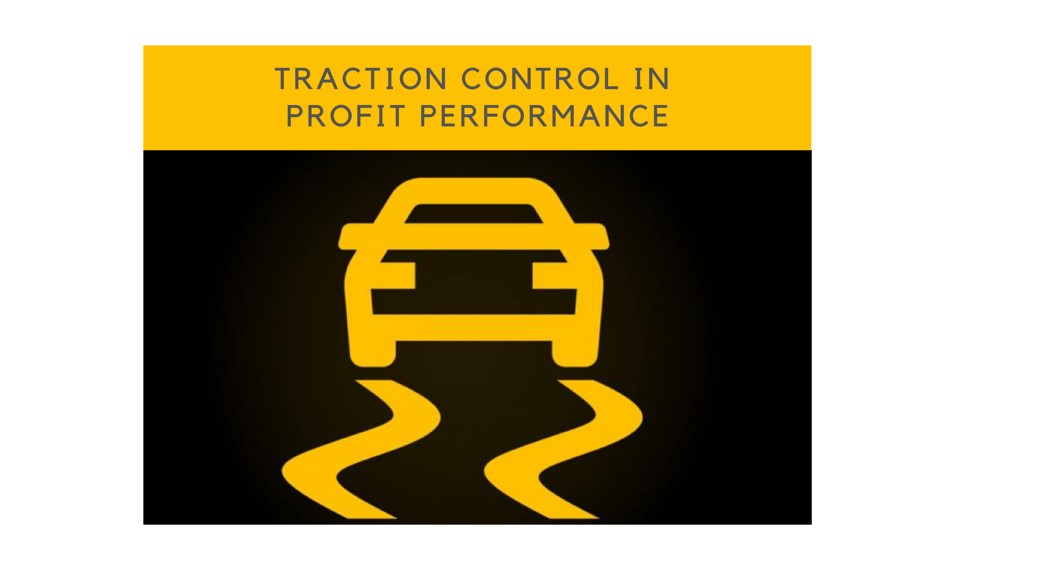Get Traction in Profit Performance
Business leaders focus on growing profit performance. Yet they are constantly challenged with various moving parts in their business and teams.
A common experience is “we are spinning our wheels”.
The COVID pandemic adds an additional layer of complexity that will take some time for all to settle into the new normal. It has taken its’ toll on profit performance of many companies.
The truth however is that business leaders can’t just lie down and take it on the chin and hope for the best. We have to fight back and find every little piece of ground we can win back, claim victory and move on to the next small win.
Beyond the Summit
Looking at this journey, we firstly have to ride out the storm, but also plan for significant profit performance beyond this season. It is interesting to note that of the people who summit Mount Everest, more people die on the way down than on their way up. This is due to them planning only for the summit and then being unprepared for the decent.
NOW is the right time to plan new strategies that will scale when the world opens up fully. And it will be sooner than we are preparing for. The biggest mistake will be to only focus on getting through the storm. Granted, we first need to survive the storm, but also balance the timing of our strategies.
Plan Long – Execute short
What the COVID pandemic has highlighted for me is how many businesses are still operating in the old ways of work and how we are holding on to these practices.
In our own business, we’ve recently had to rip the plaster off and take the pain that came with it. But it positioned our business into the new landscape, ready to scale on a new foundation. By the time COVID hit, we were positioned.
One main reason business under-perform, in my view, is because we do not balance our strategies enough between the immediate and long term.
What I see in business is that the team tends to spin their wheels chasing every crisis that surfaces on the day. Or they build such heavy capability for the long term that it loses all the value intended before it is implemented.
Both approaches frustrate the people and the leadership, leading to poor performance. The trick is to execute on the short term but keep aiming for the long-term goal.
Most businesses have a 1-year “strategy” and plan, but does your business have a 20-25-year BHAG®[i] and a 3-5 year strategy that the team can steer towards?
Team dysfunctions
When dealing with business leaders, these are some of their frustrations:
“My biggest need is to free up enough of my time. I need to focus on innovating the business to the next level, seeking out that killer deal or designing that new product or offering that will set our business apart.”
“My leadership team is spinning their wheels, they are working in silos and not taking accountability for combined performance.”
“Some team members are playing out of position and doing things they are not passionate about. It just erodes the trust in the team and ultimately our performance.”
“We waste so much time and money in meetings trying to get alignment while each person pulls one degree away from the goal. This is exhausting!!”
How to reach real profit performance
First off, this is a journey and not a sprint. However, many sprints in a coordinated relay makes the journey much faster.
Step 1: Visibility
Creating visibility of the current performance is our first objective. A bush pilot can navigate some treacherous territory with a few basic instruments. However, if he tracks the wrong gauges, he is flying blind in dangerous territory and risks high probability of failure.
Identifying a few key metrics that consistently drive profits with current data, is what we’re after, instead of creating metrics from available data.
Step 2: Accountability
The next step is to help the leadership team to get traction on the performance of these key metrics. It sounds obvious, but many teams lack focus and create work that does not drive the ONE objective. The result is the so-called “wheel spin” – great spectator-value, but terrible for results.
Data without insights does not empower quality decisions. It is the combination of insights and the alignment of the team that create high-performing teams and the performance traction required.
This step gets the team aligned behind the same objective, breeding cohesion and accountability, moving the business forward in big leaps.
Step 3: Capability
During the iterations of Visibility and Accountability, insights start to emerge. These relate to both business performance and the capability to sustain the performance.
A Management Accountability Systems (MAS) is effectively established. The insights gained drives the prioritised roadmap of capability against the value it will return to drive the ONE goal. If the ONE goal (strategy) is not clear, it will form part of the roadmap that needs attention.
Roadmap items are then sequenced into minimum viable products according to the value of their impact into short agile sprints. This way, the value released in Steps 1 & 2 should fund some of the investment in capability. Innovation inside the sprints should release more funding and growth.
Conclusion
Using this approach, we find that the balance is restored between the immediate performance, the longer-term strategic thinking and the need for investing in appropriate capability.
Experience profit performance, by taking back lost ground, with small wins and a team that has Traction.
[i] BHAG® – Big Hairy Audacious Goal – Jim Collins & Jerry Porras
Written by Barend Cronjé.
